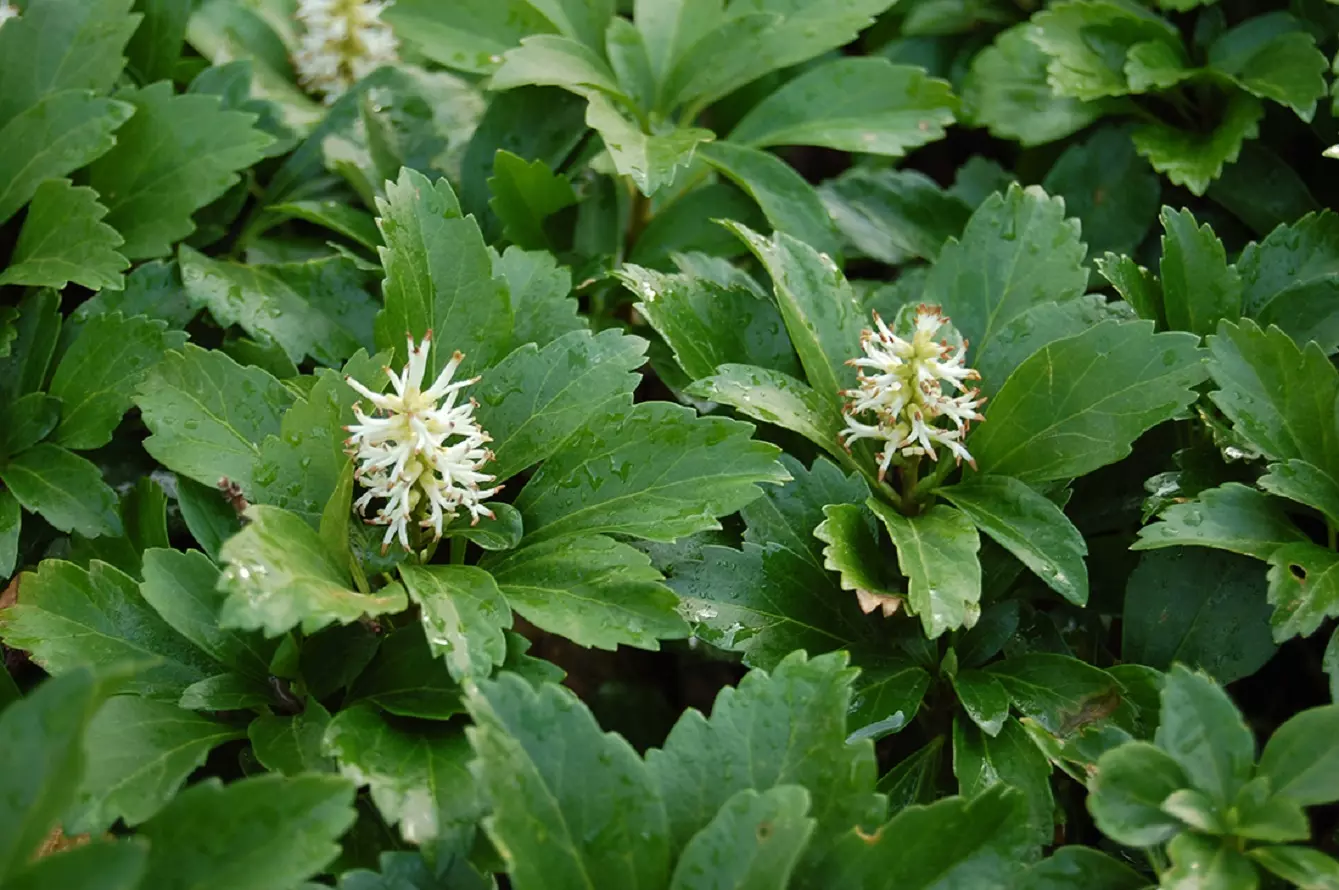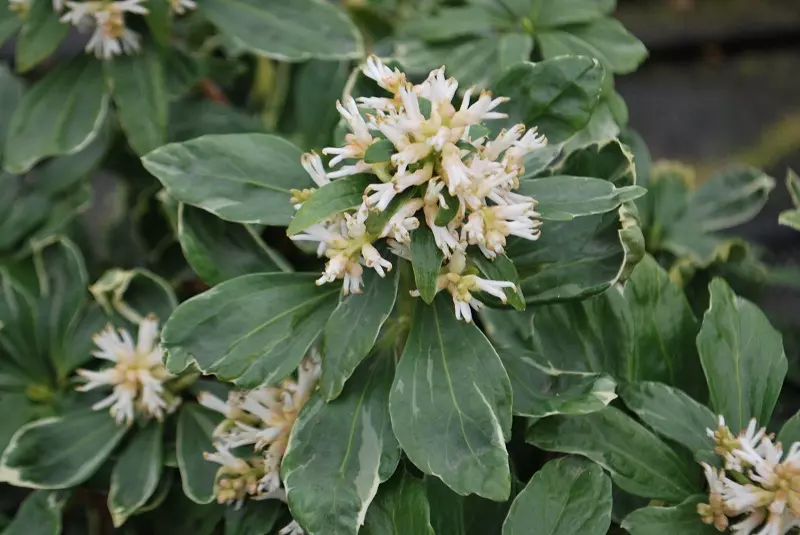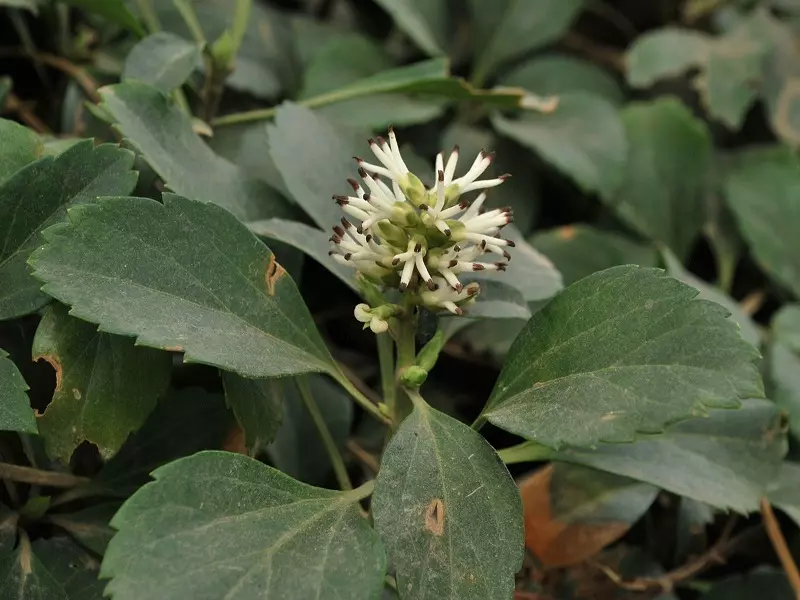Pachysandra Terminalis - How to Care for Japanses Spurge Plant
Pachysandra terminalis is a leafy plant just like boxwood. Because of its characteristic appearance, it's a valued decorative element used in yards. Before deciding on having this plant in your garden, make sure to learn about its requirements and care tips, so you can provide the best growing conditions to them. Find out about the needs of Japanese spurge.

Pachysandra terminalis – what kind of plant is it, and what is it known for?
Japanese spurge, also known as Pachysandra terminalis is an evergreen plant belonging to the group of ornamental shrubs. It grows mainly in China and Japan. But, because of its characteristic appearance, it can be found everywhere in the world.
The plant grows about 20-30 cm (7-12 in) tall, although some varieties are taller. If provided with good conditions and growing in a hospitable location, it becomes a ground cover plant, forming underground branches. Thanks to this, the garden gets covered with characteristic and beautiful green carpets. For this reason, it’s a popular plant among gardeners owning large properties.
The plant develops small inflorescences with many small, cream flowers. If the conditions are favorable, fruits might appear on the stems. They are tiny and white.

Japanese spurge – the most popular varieties
Japanese pachysandra is quite a popular plant. Several noteworthy varieties are particularly popular among gardeners. They are:
- Green Carpet – its leaves are bright green,
- Green Sheen – with dark-green, shiny leaves,
- Variegata – with green leaves of cream edges, this variety grows much slower than the other types, and requires a lot of light for the leaves to get their color.

When and how to plant pachysandra terminalis?
Japanese spurge is relatively easy to plant. Ideally, pick one of the two best times when you can do it. The first one is the beginning of March and lasts until the end of April. The other one is the beginning of August – you can plant pachysandra until November.
When planting Japanese spurge, keep the spacing between the plants – from 20 to 25 cm (8-10 in). The hole for the plant should be relatively deep – about 40 cm (16 in). Make sure the ground is well-watered during the first days after planting.
What is the best location for Japanese spurge?
Most varieties of this plant prefer shaded and half-shaded locations. That’s where they spread perfectly. Exposure to strong sunlight might cause scorching of the leaves.
Japanese pachysandra tolerates all types of soil. But it grows best in fertile, humus-rich and permeable ground of moderate moisture levels.

Pachysandra – fertilizer and watering
Japanese spurge can endure difficult conditions without an issue. For this reason, it doesn’t require frequent and excessive watering. Once every 3-4 weeks is enough. But it’s good to support the plant’s growth with fertilizer. A product designed for ornamental plants is perfect for this purpose. It’s typically used once per month.
How to propagate Japanese spurge?
Japanese spurge can be propagated by rooted offsets. Spring is the best time for harvesting them – that’s when the plant should be trimmed. The best offsets have at least two nodes and a well-developed root system. Retrieved seedlings should be immediately planted in a new place.
Another method involves retrieving half-lignified cuttings. They should be harvested between July and September. 20 centimeters (ca. 8 inch) is the ideal length. The plant needs to contain at least one rosette of leaves. Before putting the cutting in the ground, use rooting hormone to make roots appear on the stem. It takes about 2 months.

Pachysandra terminalis – diseases
Japanese pachysandra is resistant to various types of diseases. The only threat to them is wrong soil, which might be a cause of chlorosis and root rot. If the plant is watered too intensely, and the ground is too moist, Japanese spurge might get attacked by botrytis. But if provided with appropriate growing conditions, pachysandra grows without issues.
Is Japanese pachysandra vulnerable to pests?
Aphids are the most common pests that might attack pachysandra. But they appear on many garden plants, and you can easily fight them off. Both home remedies and store-bought products should resolve the problem.
Japanese spurge might get affected by yet another serious threat – slugs eating its leaves. You can protect the plant by using special remedies purchased in a gardening store. Prevention is the most important part of dealing with the issue, as these pests can do much harm during just one night.
Pachysandra terminalis - price
Japanese spurge is not an expensive plant. The prices start at $10 for the basic variety. Note that some cultivars are more expensive. If you want to plant pachysandra in your garden, check local plant nurseries. They sell plants in bulk and often offer discounts.

📍 How to plant Japanese spurge?
This plant requires certain planting rules. Keep the spacing of 20-25 cm (8-10 in) between each plant. The hole has to be 40 cm (16 in) deep. Make sure to plant pachysandra during its planting season.
📍 When to plant Japanese pachysandra?
Japanese pachysandra can be planted in two periods. The first is from March to April. The other period lasts from August to November. You have plenty of time to think whether to plant pachysandra in your garden.
📍 Where to buy Japanese spurge?
Most gardening stores offer Japanese spurge for sale. Make sure to check supermarkets with gardening sections as well. You can find good deals there.
Featured articles




